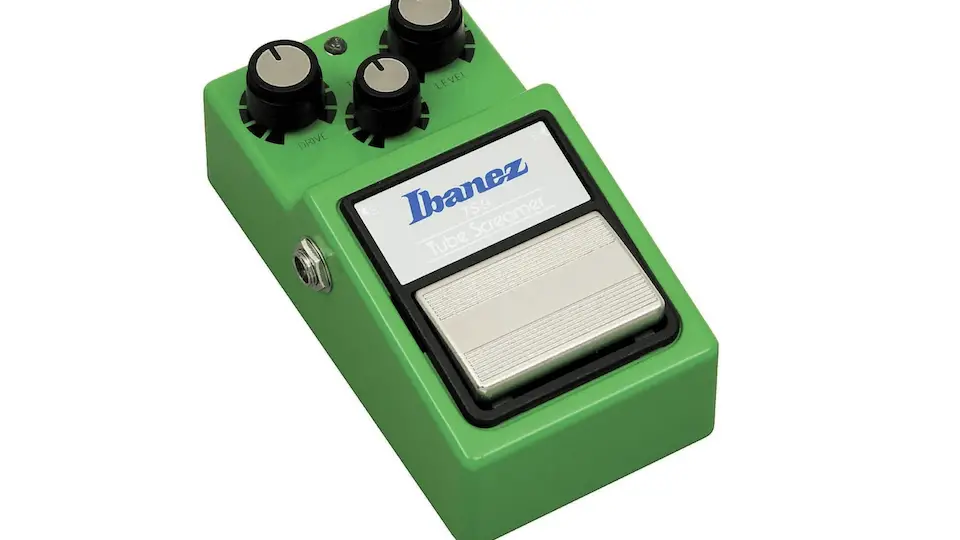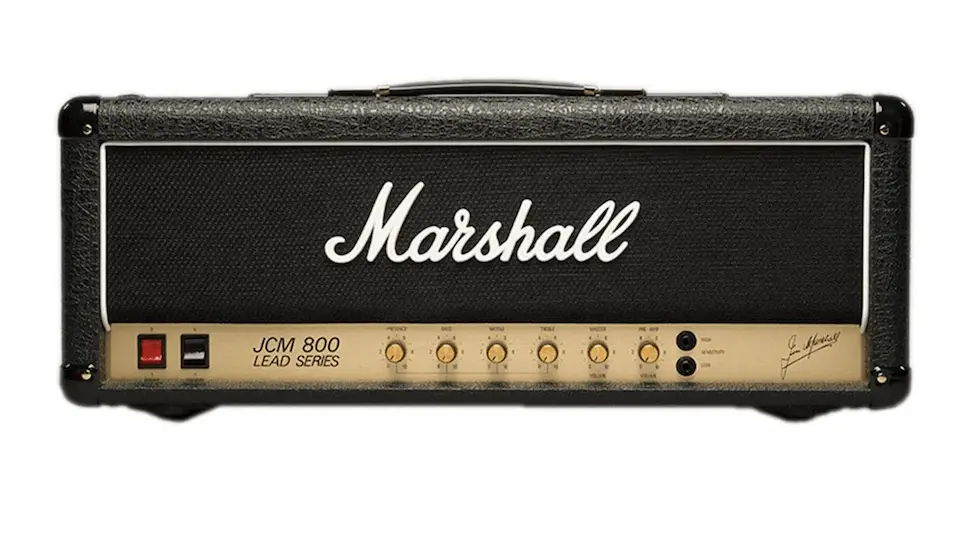Even after all these years, the world of electric guitar still holds many secrets. And, to be fair, we all take some of the concepts for granted, especially pedals and other effects. What we can now afford for a very modest price was not easily obtainable back in the old days. This is especially the case with distortion. So what is distortion?
Going back to the period between the late 1940s and up to late 1960s, achieving distortion was far from an easy task. There were a few ways guitar players managed to achieve it. The first method involved pushing tube amps over the limits, which is something blues musicians do even today.
The second method was to damage the amplifier, which is what Dave Davies of The Kinks did when recording “You Really Got Me.” The third method included using either damaged equipment, like Grady Martin did on Marty Robbins’ “Don’t Worry,” or by making custom-made devices that pretty much emulated broken equipment.
These days, the effect is easily achieved, either through amp’s own distortion or by using specialized pedals. But have you ever wondered – what is actually distortion? We also hear about other stuff, like overdrive, boost, or fuzz.
How are these effects actually different and what is the secret to their unique tone? This is exactly what we’re going to discuss here and clear things up for anyone. After all, knowing more about how effects are achieved can help you get a better tone. So, what is distortion – let’s move ahead!
What Is Distortion: What You Need to Know First
But before understanding what distortion is, we need to get a few things straight. This effect is achieved through clipping. But in order to understand what that means, we need to look into the clean signal.
Without any distortion or an effect, a guitar tone can be presented as one simple continuous sine curve. By amplifying the signal, you increase the signal’s peak amplitude, making the wave bigger.
However, every amplifier has a threshold. And the distance between the threshold and the peak of the wave is referred to as the headroom. By increasing the signal’s strength, and thus its amplitude, you finally reach the amp’s threshold.
As the wave passes this limit, it gets “clipped,” thus changing it shape. As a result, the guitar tone gets distorted. The lower the amp’s threshold, the easier it gets to achieve distortion.
But things are not that simple. The clipping process seems simple, you just push the input signal strength and the “excess” gets clipped by the amp and the device and you get that distorted tone? Well, it goes beyond that. There are different types of clipping.
Depending on the signal curve shape, you get softer or harder clipping. As its name suggests, softer clipping creates a softer and more gradual change. At the same time, harder clipping will create a more “radical” cut on the sine curve of the clean signal.
Although it might seem confusing at first, the process is not that complicated. In guitar pedals, this is all achieved using operational amplifiers (or op-amps) and transistors or diodes. Op-amps have the purpose of amplifying the signal, while the transistors or diodes deliberately clip it and create a distorted tone. Let’s move on with the subject of “What is distortion.”
Clean Boost
Although not a distortion effect by itself, it’s important to explain what boost, or “clean boost,” actually is. These pedals, or integrated units in amplifiers, just amplify the signal, add some decibels at the input, and don’t do any clipping.
However, if you pair it up with a tube-driven amplifier, the signal can potentially hit the amp’s threshold and thus create that “organic” distortion that tube amps are known for. These used to be quite popular in the old days, one of the examples being the Dallas Arbiter Rangemaster treble booster.
Overdrive
Technically, overdrive is a type of distortion and commonly confuses folks who ask “What is distortion?”. What we traditionally refer to “distortion” as guitar players is another subtype of distortion, but we’ll get to that.
Now, we’re interested in overdrive. The idea behind all overdrive pedals (or any other units) is to do softer clipping. Although some might think that overdrive is just a less intense distortion, the truth is that overdrive is just a different type of distortion.
This softer cutting of the clean signal’s sine curve causes the tone to be smoother, similar to what tube amps pushed over the limit sound like.
When it comes to overdrive pedals, we have the standard op-amps that amplify the input signal. The clipping process is then done using two diodes. One diode affects the top of the wave while the other cuts the bottom. In most cases, these are identical diodes that cut the wave identically on both sides. However, sometimes we have two different types of diodes that cut these two sides differently, thus creating asymmetrical clipping and a very unique tone.
Distortion
The distortion in the classic sense refers to distortion with heavier clipping. Compared to overdrives, waves here are cut sharply at the threshold. The resulting tone is more “scorched” or “fried,” something that you can hear in most of the 1980s rock and metal music.
And compared to overdrive, distortion pedals add more gain on the input while also managing to keep things stable. Compared to overdrives, distortion pedals have transistors that do all the clipping, at least in most cases.
The one “side effect” of more intense clipping is compression. This is why when you add more distortion to your tone, you notice less dynamic response. This is especially noticeable with those “modern” metal tones, even if guitar players are using tube amplifiers which are usually known for great dynamic response.
Fuzz
Another term that confuses everyone asking “What is distortion?” – the fuzz effect. We’ve discussed overdrive and traditional distortion as some of the two most common effects in pretty much all genres where electric guitar is present. But then there’s the fuzz effect.
You may know it for its distinct harsh tone and that extremely rich harmonic content. Compared to regular distortion and overdrive, here we have extreme clipping. This means that the entire wave is completely distorted and has a completely square shape.
Quite often, fuzz pedals feature only transistors and no operational amplifiers. The resulting tone is extremely “disfigured” and very saturated. In fact, it’s quite often used for lead sections or one-note riffs. If you were to play a power cord on your guitar with a fuzz pedal on, it would sound a bit messy, but it works in some cases.
However, playing a regular minor or major chord, or even any interval that’s not a perfect fifth or a perfect fourth, then there’s a high chance that you’ll make it all sound really messy and just horrible. In some cases, if you tone the fuzz intensity down, you might get that bluesy tone in the vein of ZZ Top’s Billy Gibbons.
The fuzz effect is quite popular among psychedelic rock and stoner rock musicians. At the same time, it’s also not uncommon to hear it used in some blues songs, especially those that mimic what Jimi Hendrix did back in the day. After all, he’s one of the most famous users of the fuzz effect, with Dallas Arbiter Fuzz Face being his weapon of choice.
What’s the Best Choice for Me?
This question makes perfect sense after you’ve figured out the one asking “What is distortion?”. Clean boost, overdrive, classic distortion, and fuzz are all technically distortion effects.
However, they have different use in the world of guitar-oriented music. For instance, a clean boost finds its use to push tube amps over the limit and let them do all the clipping. At the same time, it can come in handy to just increase volume without distortion as well.
As far as overdrives go, they usually find their use in blues, blues rock, classic rock, and pop music. When paired with a solid-state amp, they will emulate the warmth of tube amps to some degree. But when paired with tube amps, they will push them over the limit and even create some seriously distorted tones. For instance, Marshall JCM800 and Ibanez Tube Screamer are still remembered as a classic combination for some metal musicians.

Check Ibanez Tube Screamer on Amazon
Classic distortion is pretty straightforward. It’s useful for rock, metal, and extreme metal genres. Of course, you’ll also find it in any setting where a harsh guitar tone is necessary. There are also some pedals that let you blend between softer and harder clipping, one example being Boss OS-2.
As far as the fuzz effect goes, it’s not as nearly as popular compared to overdrive and distortion. It doesn’t make it “worse” by any means, but it’s just very specific and has a smaller following. You’ll usually find it used for psychedelic rock music, stoner rock, and some styles of blues music.

Check Marhsall JCM800 on Amazon
As we already explained, it’s really saturated, it’s really messy, and has a very rich harmonic content. You won’t exactly be able to play regular chords or some intervals without it sounding really “dirty.” It’s just for those who have a very specific taste in music. We hope this guide was useful to you, that you’ve learned something new, and that we’ve answered that question: “What is distortion?”. Stay safe and rock on!
Image source: Flickr
